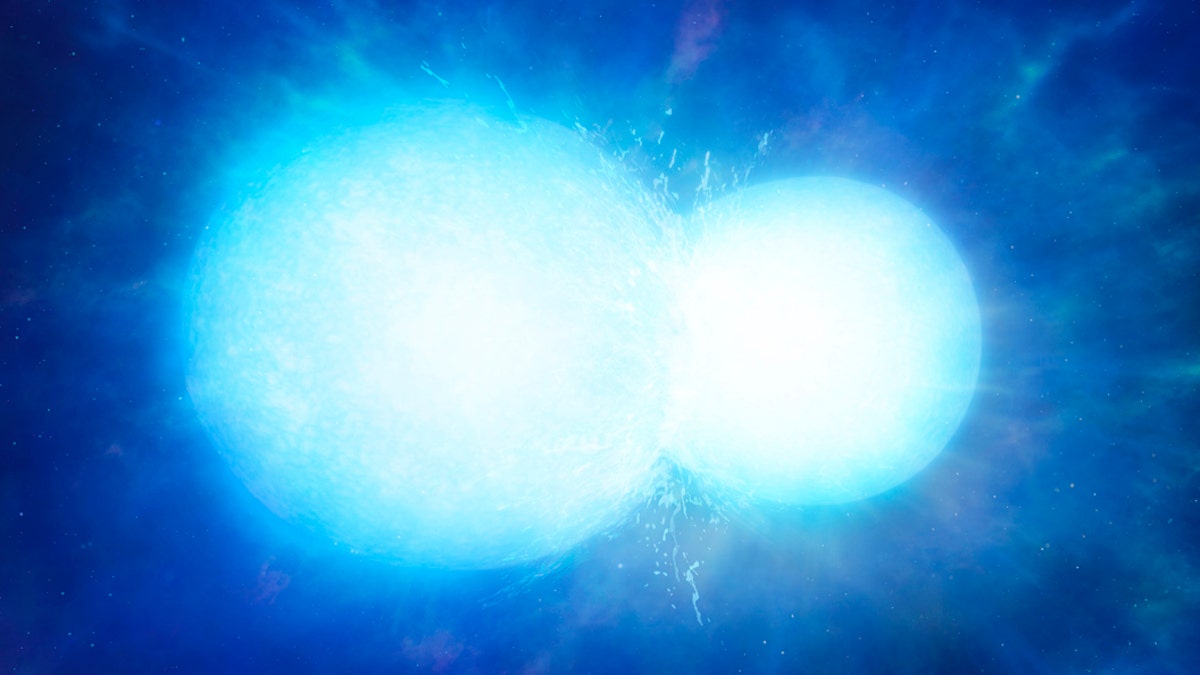Fox News Flash top headlines for March 3
Fox News Flash top headlines are here. Check out what's clicking on Foxnews.com.
Astronomers have discovered a star "with a bizarre carbon-rich atmosphere" 150 light-years from Earth that they believe could be two white dwarfs that merged together.
The star, known as WDJ0551+4135, is believed to be the first massive white dwarf star comprised of two white dwarfs. White dwarfs are generally small, at 0.6 times the mass of the Sun, but WDJ0551+4135 is 1.14 times the mass of the Sun, which raises new questions about how these stars evolve and the number of supernova in the galaxy.
“This star stood out as something we had never seen before," the study's lead author, University of Warwick Department of Physics professor Mark Hollands, said in a statement. "You might expect to see an outer layer of hydrogen, sometimes mixed with helium, or just a mix of helium and carbon. You don’t expect to see this combination of hydrogen and carbon at the same time as there should be a thick layer of helium in between that prohibits that. When we looked at it, it didn’t make any sense.”

An image comparing the size of the Earth with a typical white dwarf. White dwarfs are the dead cores of stars that have become very compact. Ironically, the more massive the white dwarf, the smaller it is, because the higher its gravity. The white dwarf shown here is about half as massive as the Sun. (Credit: University of Warwick/Mark Garlick)
BLAST SIMILAR TO 'BIG BANG' DETECT FAR, FAR AWAY, STUDY SAYS
The research has been published in the scientific journal Nature Astronomy.
In addition to determining that the star is actually two stars merged together, Hollands and the other researchers found that the star's atmosphere is comprised of more carbon than expected and it is significantly older than they initially believed, at 1.3 billion years. For comparison purposes, the universe itself is approximately 13.8 billion years old.
“We have a composition that we can’t explain through normal stellar evolution, a mass twice the average for a white dwarf, and a kinematic age older than that inferred from cooling," Hollands added. "We’re pretty sure of how one star forms one white dwarf and it shouldn’t do this. The only way you can explain it is if it was formed through a merger of two white dwarfs.”
WDJ0551+4135 is one of just a handful of merged white dwarf stars in the known universe and the only one with its particular composition. However, Hollands said there may be more to be discovered.
"There aren't that many white dwarfs this massive, although there are more than you would expect to see, which implies that some of them were probably formed by mergers," Hollands explained. "Maybe the most exciting aspect of this star is that it must have just about failed to explode as a supernova."





















